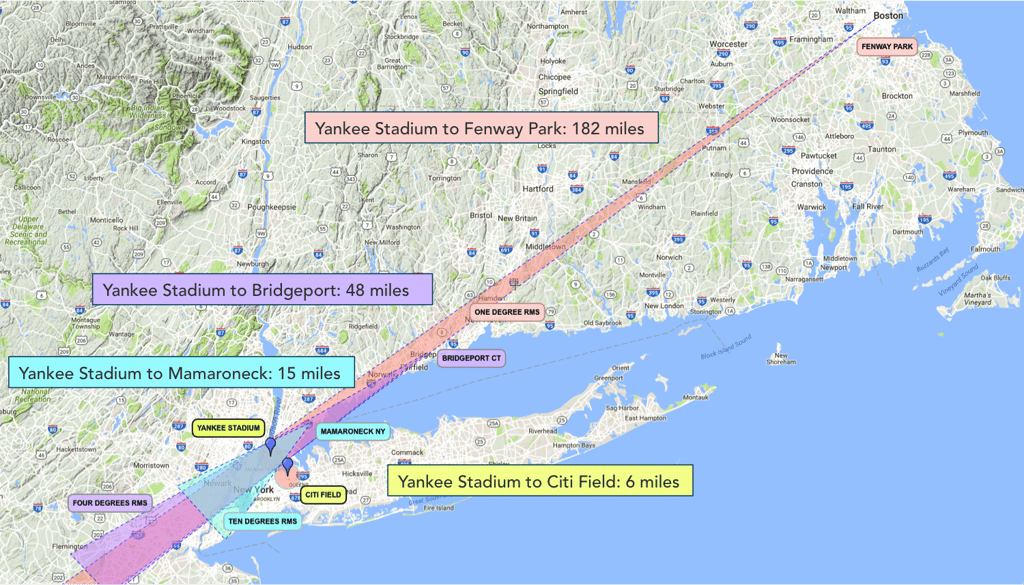Let's take a look at the practice of radio direction finding, and the levels of accuracy needed for different DF applications.
Radio Direction Finding Accuracy
Practitioners of radio direction finding (DF) focus on optimizing line of bearing accuracy to emitters. Presumably, the smaller the RMS of the angle estimate, the better. But extreme accuracy entails large systems with substantial cost. So, let’s take a step back to consider some issues.
- On what platform will your DF system reside?
- What frequency range do you want to DF?
- What is your concept of operations (CONOP)?
DF System Platforms
Although possible, it is more difficult to perform high accuracy DF using a manpack system than on a vehicle or ship, and certainly way harder than with a large fixed site DF array system -- but the accuracies needed for each are not necessarily the same!
DF Frequency Ranges
For VHF and UHF, sizes of DF systems can be smaller than HF DF systems. They do not need to see beyond the line of sight, because their signals don't propagate around the earth like LF, MF and low HF signals do (by ground wave, ionospheric reflection, etc.)
DF Accuracy Estimates
Would DF accuracy estimates need to be similar on all these systems for each to be effective? Simple trigonometry says most likely not. Sub-degree RMS line-of-bearing (LOB) uncertainties are possibly needed for intra- and inter-continental DF systems. But even a target 2000 miles away can be located to within 35 miles along the 1 degree RMS LOB error arc. If you want to geolocate an emitter that is 60 miles away, 1 degree accuracy would get you within a one mile uncertainty arc.
DF Accuracy Example
To illustrate, let’s use a somewhat realistic scenario. Your friend Ham is a big Yankees fan and always travels with his radios, especially to big events like an NYC subway series between the Bronx Bombers and the Amazing Mets.
You’re overdue for a beer with Ham and would like to surprise him with a last minute visit from your home base near Fenway Park (about 182 miles as the crow flies), but you don’t know which stadium has the game. Firing up your trusty HF DF system with one degree RMS accuracy, you can pretty confidently resolve his position to be near Yankee Stadium (separated from Queens' Citi Field by 6 miles); because one degree at 182 miles subtends a 3.1 mile arc.

Jumping in your car with its DF system accuracy of about 4 degree RMS (and risking your life with a ride down I-95), how close would you have to get to the House-that-A-Rod-Built to make sure Ham is still there? That would be near Bridgeport, CT, about 47 miles away from Yankee Stadium, at the edge of the 3 mile uncertainty arc length.
Heading even closer, you could still locate Ham with degraded 10 degree LOB uncertainty when near Mamaroneck, NY, only 15 miles from the Bronx. See the diagram above for a graphical depiction of the scenarios. Now, whether you or Ham enjoys the beer more is completely up to the Mets!
Choosing the Right DF Solution
So, although Cyntony offers many DF solutions, choosing the right one depends a lot on your concept of operations. Such real-world use cases strongly drive the selection of approach and system. Our Customer Attuned Collaboration process is designed to produce successful outcomes. Let’s chat to discover the best solution for you.
If you'd like to learn more about the calibration techniques used to refine performance of interferometric direction finding antenna systems, check out our informative white paper:




